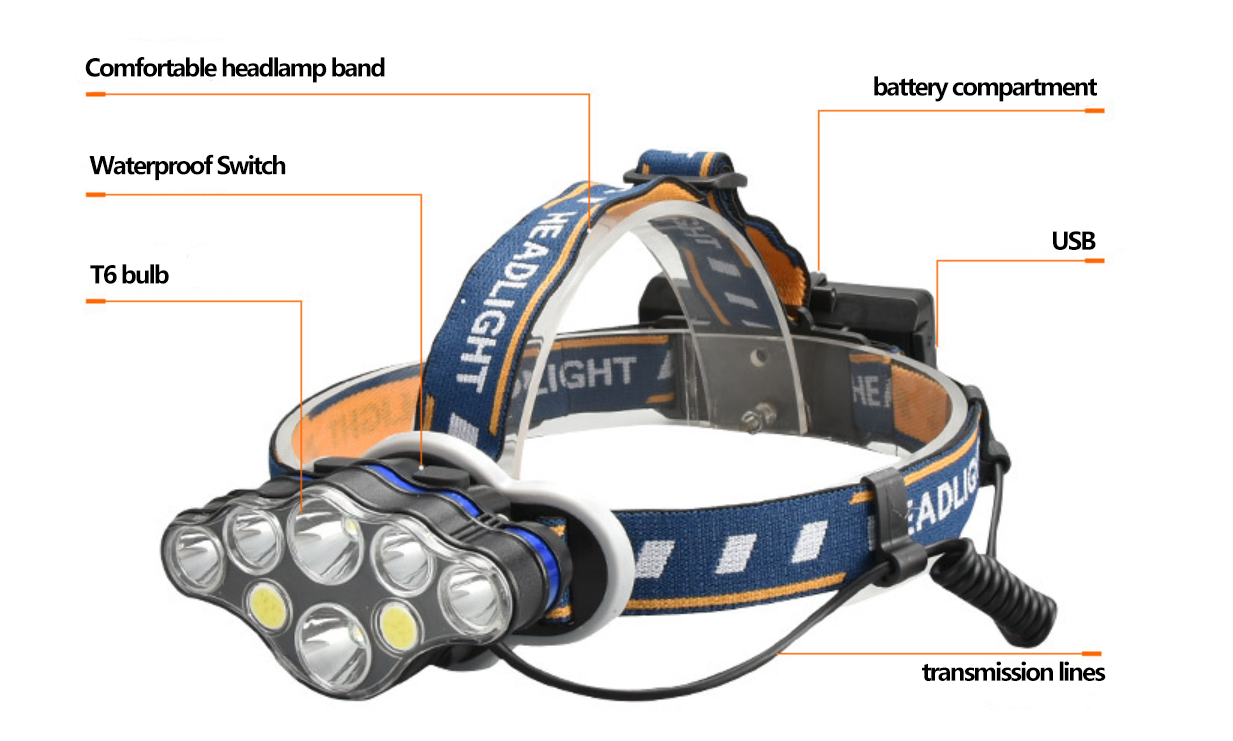A headlamp that utilizes battery power is the ideal personal lighting appliance for the field.
The most appealing aspect of a headlamp’s ease of use is that it can be worn on the head, thus freeing up your hands for greater freedom of movement, making it easy to cook dinner, set up a tent in the dark, or march through the night.
80% of the time your headlamp will be used to illuminate small items in close proximity, such as gear in the tent or food while cooking, and the remaining 20% of the time the headlamp is used for short walks at night.
Also, please note that we’re not talking about high-powered lamps for illuminating campsites. We’re talking about ultralight headlamps designed for long-distance backpacking trips.
I. Factors to consider when buying a headlamp:
1、Weight: (no more than 60 grams)
Most headlamps weigh between 50 and 100 grams, and if they are powered by disposable batteries, to go on a long hike, you must carry enough spare batteries.
This will definitely increase the weight of your backpack, but with rechargeable batteries (or lithium batteries), you only need to pack and carry the charger, which can save weight and storage space.
2. Brightness: (at least 30 lumens)
A lumen is a standard unit of measurement equal to the amount of light emitted by a candle in one second.
Lumens are also used to measure the amount of light emitted by a headlamp.
The higher the lumens, the more light the headlamp emits.
A 30 lumen headlamp is sufficient.
For example, most indoor lighting ranges from 200-300 lumens. Most headlamps offer a wide range of brightness output settings, so you can adjust the brightness to fit specific lighting needs.
Keep in mind that bright headlamps with high lumens have an Achilles heel – they drain batteries incredibly fast.
Some ultralight backpackers will actually hike with a 10-lumen keychain flashlight clipped to their hat.
That said, lighting technology has advanced so much that you rarely see headlamps with less than 100 lumens on the market anymore.
3. Beam distance: (at least 10M)
Beam distance is the distance the light illuminates, and headlamps can range from as low as 10 meters to as high as 200 meters.
However, today’s rechargeable and disposable battery headlamps offer a standard maximum beam distance of between 50 and 100 meters.
This depends entirely on your needs, for example, how much night hiking you plan to do.
If hiking at night, a strong beam can really help to get through dense fog, identify slippery rocks at stream crossings, or assess the gradient of a trail.
4. Light Mode Settings: (Spotlight, Light, Warning Light)
Another important feature of the headlamp is its adjustable beam settings.
There are a variety of options to meet all of your nighttime lighting needs.
The following are the most common settings:
Spotlight:
The spotlight setting provides a high intensity and sharp beam of light, much like a spotlight for a theater show.
This setting provides the farthest, most direct beam of light for the light, making it ideal for long distance use.
Floodlight:
The light setting is to illuminate the area around you.
It provides low-intensity and broad light, just like a light bulb.
It is less bright overall than a spotlight and is best suited for close quarters, such as in a tent or around a campsite.
Signal Lights:
A signal light setup (aka “strobe”) emits a red flashing light.
This beam setting is intended for use in emergencies, as the flashing red light can be seen from a distance and is commonly recognized as a distress signal.
5. Waterproof: (minimum 4+ IPX rating)
Look for a number from 0 to 8 after “IPX” in the product description:
IPX0 means it is not waterproof at all
IPX4 means it can handle splashing water
IPX8 means it can be completely submerged in water.
When choosing a headlamp, look for a rating between IPX4 and IPX8.
6. Battery life: (Recommendation: 2+ hours in high brightness mode, 40+ hours in low brightness mode)
Some high-powered headlamps can drain their batteries quickly, which is important to consider if you’re planning a backpacking trip for several days at a time.
The headlamp should always be able to last at least 20 hours in low intensity and power saving mode.
This is something that will keep you going for a few hours at night out, plus some emergencies.
Post time: Jan-19-2024
 fannie@nbtorch.com
fannie@nbtorch.com +0086-0574-28909873
+0086-0574-28909873






